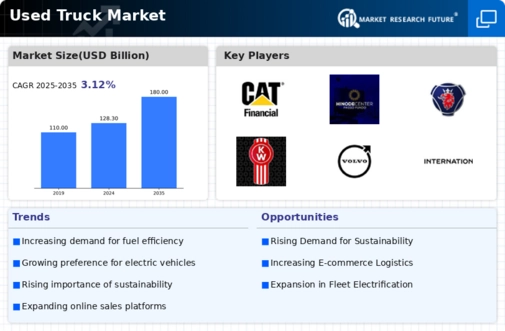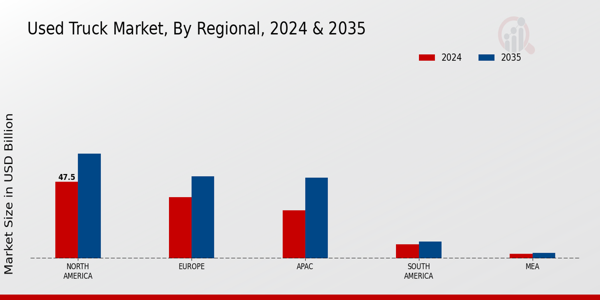The Used Truck Market has seen significant growth over the years, driven by factors such as increasing demand for efficient transportation and logistics solutions across multiple sectors.
The competitive landscape is marked by a variety of players, each vying for market share through strategic innovations, premium service offerings, and customer-centric approaches.
With the rise of e-commerce and globalization, companies operating within this space are adapting to rapid changes, ensuring their products meet the evolving needs of customers.
This market is characterized not only by the transactions of used trucks but also by the ancillary services surrounding them, including financing, repair, and after-sales support, all contributing to the competitive dynamics in this segment.
The market is influenced by regional variations, customer preferences, and economic conditions, making it essential for companies to stay ahead through continuous improvement and innovation.
Caterpillar is a prominent player in the Used Truck Market, leveraging its well-established brand reputation and extensive distribution network to enhance its market presence.
One of the significant strengths of Caterpillar lies in its commitment to producing durable and efficient trucks that cater to heavy-duty applications, which are necessary for various industries.
Its innovative technology, including telematics and advanced fleet management systems, provides added value to customers, ensuring optimal performance and reduced operational costs.
Caterpillar also boasts strong customer loyalty due to its reliable product quality and after-sales service, which includes maintenance contracts and warranty options.
This reliability allows the company to retain existing customers while attracting new buyers who prioritize performance and longevity in their used truck purchases, reinforcing its competitive position in the global market.
Hino, another key player in the Used Truck Market, is recognized for its commitment to quality manufacturing and innovation. The company offers a diverse range of used trucks known for their fuel efficiency and environmentally friendly engineering, making them a preferred choice in regions where sustainability is increasingly prioritized.
Hino's market presence is supported by a strong reputation for reliability and performance, particularly in the light-to-medium-duty truck segments.
Additionally, Hino's strengths include a comprehensive after-sales service network, which enhances customer satisfaction and loyalty. The company has also engaged in strategic mergers and acquisitions to broaden its market access and technology capabilities, allowing it to stay competitive amidst growing global competition.
With its ongoing investment in research and development, Hino continually adapts its offerings to meet the trends and demands of the used truck market, ensuring it remains a formidable competitor in this dynamic landscape.















